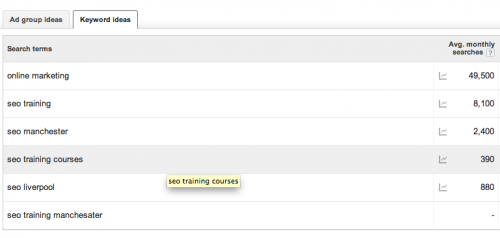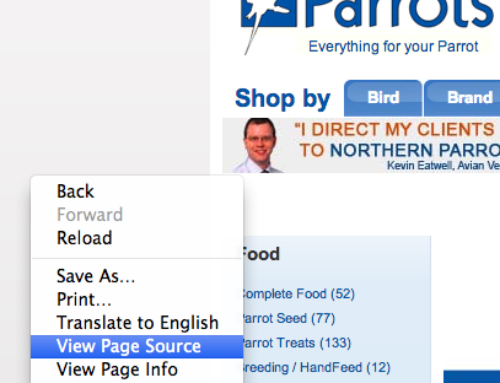The first point to accept here is that this part of the process needs to be kept separate from other parts. Don’t be concerned at this stage where these keyphrases will go on your website – we’ll address this later. The important point is to find and record them. You’ll find the best way to do this is to open up a spreadsheet. Here’s a copy of one we use when doing this work with our clients….

Don’t worry about all the columns at this stage, it’s the first two only you’ll be filling in at the moment – the phrase itself and the search volume (number of monthly searches). The other columns we’ll fill in later.
How do you go about finding keyphrases that will bring relevant traffic to your site? I’ll introduce you to a tool to take the guesswork out of it, courtesy of Google. The important thing about this is that this in an actual record of what real people have been searching for.
However you will need to set up an AdWords Account if you want to use this tool. This can be done by visiting: https://accounts.google.com. You only need to follow the instructions until you arrive at the Create a Campaign page.
Then on this page Click on Tools then Keyword Planner

On the next page click on Search For New Keyword and adgroup ideas

When the box opens you can then enter the keywords that you deem as relevant to your website. You can also add and change where you want searches from (such as worldwide or just UK etc).

Once you have done this click on Get Ideas this will give you a huge number of keyword ideas and will also give the number of searches per month.
When you see the results you can click on Ad group ideas or as we prefer Keyword Ideas

At the top you will see the phrases that you searched for but under these you will also get some ideas for more phrases.
Clearly, the search volume (Avg. monthly searches) is an important metric – the higher it is the more people will be arriving at your site if you capture this phrase. (You’ll also notice here that the singular and plural are different, and we need to make a note of both of them.). However its important also to capture some of the other variants, even if they have a small search volume they may have a high degree of relevance (also, they tend to be less competitive to get rankings for).
So this is the process, think of keyphrases you think your potential customers may be searching for, check out the actual phrases which are being used using this tool, and transfer relevant phrases to your spreadsheet.
How many entries in your spreadsheet? At this stage say between 10 and 20 – although we may want to supplement with additional phrases later. (Actually we’ll revisit keyphrase analysis later particularly for ecommerce sites where there may be lots of products in a database)
The two major factors when identifying these phrases are relevance (to your business) and search volume.
So, that’s your task before you read the next lesson – get around 20 phrases in your spreadsheet. Speak to your colleagues about what they think people would type to find your products and services, if time you may also want to ask some of your existing customers.
Next time we’ll look at where to include your more important phrases within your website. That is, start the actual optimisation process





